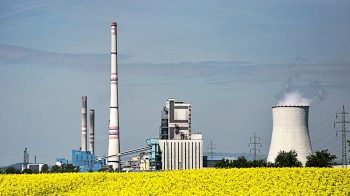The smart harvest market is projected to reach USD 15.6 billion by 2023, from USD 9.0 billion in 2018, at a CAGR of 11.81% during the forecast period. The rise in population has led to increased food demand, which in turn has led to increased pressure on farmers to increase yield and area harvested for various crops.
However, global labor shortage in agriculture is one of the major factors leading to loss of yield due to improper maintenance and farming practices. To cater to this issue, farmers are highly adopting farm mechanization and other smart agriculture techniques to optimize their crop yields.
By site of operation, indoor segment is estimated to dominate the smart harvest market in 2018.
The indoor segment includes container farming and vertical farming, which requires a controlled environment. The systems are reliant on multiple sensors installed throughout to understand the surroundings and navigate across the work area. High-resolution multi-spectral cameras and imaging sensors observe and monitor the produce to determine the time for harvest. Given the substantial growth of indoor farming practices, it is expected to pose strong growth opportunities for smart harvest systems over the next decade.
On the basis of component, the hardware segment is projected to be the largest contributor in the smart harvest market during the forecast period
The smart harvest market has been segmented on the basis of component into hardware and software. The market for software is projected to record the higher CAGR between 2018 and 2023. The hardware aspect of the smart harvest market includes harvesting robots, automation and control systems, sensors, and imaging systems. All three hardware components are designed to coordinate their activities to move, identify, and harvest the fruit/vegetable. In the coming years, the integration of AI (Artificial Intelligence) in the smart harvest systems would allow the machines to make their own decisions based on the appropriate parameters.
Harvesting robots are projected to have the fastest growth among hardware in the smart harvest market during the forecast period.
Harvesting is one of the important phases of farming and requires great amount of bending and lifting through manual labor. Additionally, labor shortage affects the overall yield output. To cater to this issue, manufacturers have introduced autonomous harvesting robots that harvests fruits and vegetables with little or no human intervention. Although majority of the manufacturers have harvesting robots in the testing phase and are designed to harvest limited fruits and vegetables, however, these smart harvest robots are expected to launch in the market for sales during the forecast period, with enhanced functionalities. With increasing labor shortage and need to reduce labor costs, the demand for smart harvesting robots is projected to be high and witness highest growth during the forecast period.
Europe is projected to account for the largest market share by 2023
The European smart harvest market is estimated to be the largest by 2023, while the Asia Pacific market is projected to grow as the fastest-growing region from 2018 to 2023. Europe and North America also host the largest concentration of manufacturers in the smart harvest industry, with major industry leaders maintaining their operations in the region. The strong agriculture sector in the region and increasing dependence on technology is expected to bolster prospects for the smart harvest market in the Asia Pacific region.
Key players in the market include Robert Bosch GmbH (Germany), Deere & Company (US), Smart Harvest Ltd. (UK), Dogtooth Technologies (UK), Harvest Automation (US), Panasonic Corporation (Japan), Root AI (US), Abundant Robotics (US), Iron Ox (US), Agrobot (Spain), Energid Technologies Corp. (US), FFRobotics (Israel), Vision Robotics Corp. (US), Metomotion (Israel), AVL Motion (Netherlands), and Harvest Croo (US).
